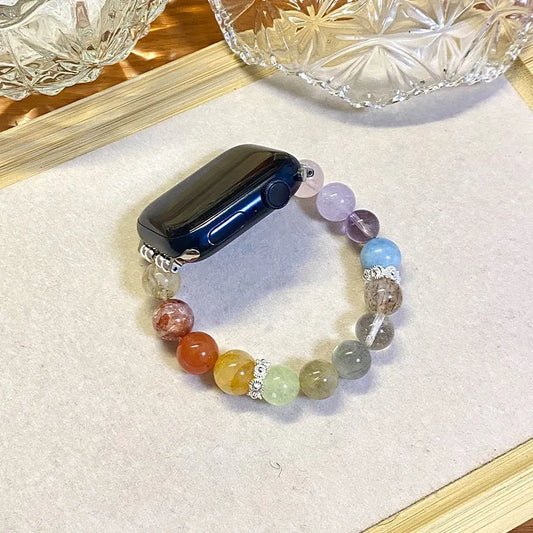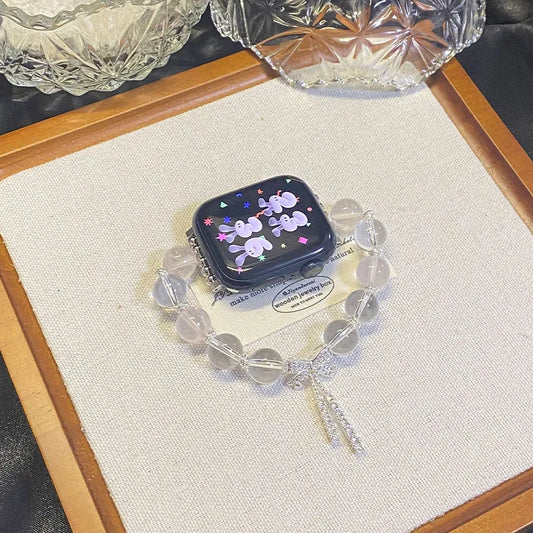You might not think too much about where you wear your Apple Watch on your wrist, but if you’re using it to track your heart rate, placement can make a big difference.

I’ve been there—thinking I’m getting an accurate reading during a workout, only to notice later that my watch wasn’t quite snug.
It turns out, there’s a bit of an art to getting those sensors to work properly, and it all comes down to where and how you wear your Apple Watch.
Understanding the Apple Watch’s Heart Rate Sensor
How the Heart Rate Sensor Works

The Apple Watch uses photoplethysmography (PPG) to measure your heart rate. This technology relies on green LED lights and light-sensitive photodiodes to detect the amount of blood flowing through your wrist.
Types of Heart Rate Measurements
- Resting Heart Rate: Measured throughout the day when you’re inactive.
- Workout Heart Rate: Monitored continuously during exercise.
- Recovery Heart Rate: Checked after you finish a workout to see how quickly your heart rate drops.
Optimal Placement for Heart Rate Monitoring

General Guidelines for Wearing the Apple Watch
To get accurate heart rate readings, wear your Apple Watch on the top of your wrist. Ensure that the back of the watch is in contact with your skin.
Specific Placement for Accurate Readings
Position the watch about one inch above your wrist bone. This placement ensures that the sensors have a flat, stable surface to measure your heart rate accurately.
Proper Fit and Adjustment
Importance of a Snug Fit
A snug fit is crucial for accurate heart rate monitoring. The watch should be tight enough that it doesn’t move around but not so tight that it cuts off circulation or becomes uncomfortable.
Adjusting the Band Correctly
Adjust the band so that it’s secure but comfortable. You should be able to fit one finger between the band and your wrist.
Impact of Wrist Position
Difference Between Dominant and Non-Dominant Wrist
Wearing the Apple Watch on your non-dominant wrist can help reduce interference from your daily activities, leading to more accurate readings.
Ideal Placement for Various Activities
For general use, wear the watch just above the wrist bone. During exercise, you may want to move it a bit higher up your arm to ensure it stays in place.
Avoiding Common Mistakes
Too Loose or Too Tight
A band that’s too loose can cause the watch to move around, leading to inaccurate readings. Conversely, a band that’s too tight can restrict blood flow and be uncomfortable.
Wearing Over Clothing
Ensure that the watch is in direct contact with your skin. Wearing it over clothing can block the sensors and lead to inaccurate measurements.
Monitoring During Different Activities
Everyday Use
For day-to-day monitoring, wear the watch snugly above the wrist bone. Make sure it’s comfortable for all-day wear.
During Exercise
For exercise, tighten the band slightly to prevent it from moving. If needed, adjust the position so it sits higher on your arm.
While Sleeping
If you track your heart rate during sleep, wear the watch securely but comfortably. It should be tight enough to stay in place but not so tight that it disrupts your sleep.
Skin Interference and Solutions

Tattoos and Dark Skin
Tattoos and darker skin can sometimes interfere with the heart rate sensor. If you have tattoos, try wearing the watch on a part of your wrist that’s free from ink.
Solutions and Adjustments
If you’re having trouble with readings, try tightening the band, cleaning the sensor, or adjusting the watch’s position on your wrist.
Enhancing Accuracy
Tips for Better Heart Rate Detection
- Keep the sensor clean and free from sweat and oils.
- Make sure the watch is in contact with your skin and not too loose.
- Use third-party apps that enhance heart rate monitoring features.
Using Third-Party Apps and Accessories
Some third-party apps and accessories can improve the accuracy of your heart rate monitoring by providing additional data or features.
Maintenance and Care
Keeping the Sensor Clean
Regularly clean the sensor on the back of the watch to ensure it works correctly. Use a damp cloth and mild soap if necessary.
Regularly Checking Fit
Periodically check the fit of your watch band to make sure it’s still secure and comfortable.
Conclusion
In the end, getting accurate heart rate readings from your Apple Watch is all about finding the right fit and placement. Make sure your watch sits snugly, just above the wrist bone, without being too tight or too loose. With a few simple adjustments, you’ll be able to trust those heart rate stats.
FAQs
What wrist should I wear my Apple Watch on for the best heart rate accuracy?
You can wear your Apple Watch on either wrist, but wearing it on your non-dominant wrist may reduce interference from daily activities, leading to more accurate readings.
How tight should my Apple Watch be for heart rate monitoring?
Your Apple Watch should be snug but comfortable. You should be able to fit one finger between the band and your wrist without it being too tight.
Can tattoos affect my Apple Watch heart rate readings?
Yes, tattoos can interfere with the Apple Watch’s heart rate sensor. Try wearing the watch on a part of your wrist that’s free from tattoos for better readings.
Is the heart rate monitor on the Apple Watch accurate?
The Apple Watch’s heart rate monitor is generally accurate for most users, but accuracy can vary based on factors like fit, placement, and skin tone.
What should I do if my Apple Watch isn’t reading my heart rate correctly?
If your Apple Watch isn’t reading your heart rate correctly, try adjusting the fit, cleaning the sensor, and restarting the watch. If issues persist, contact Apple Support.







